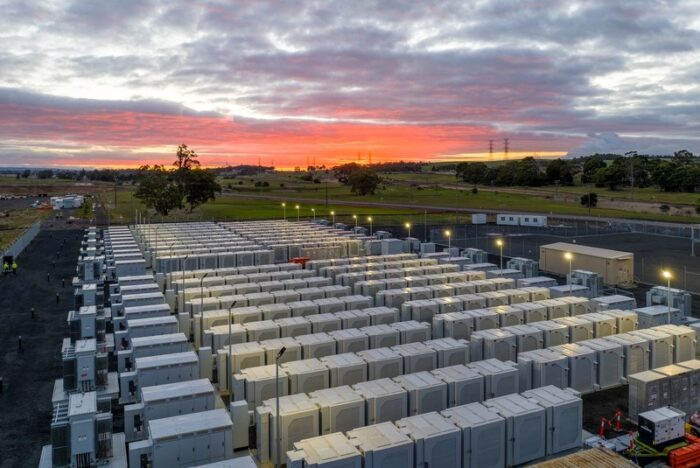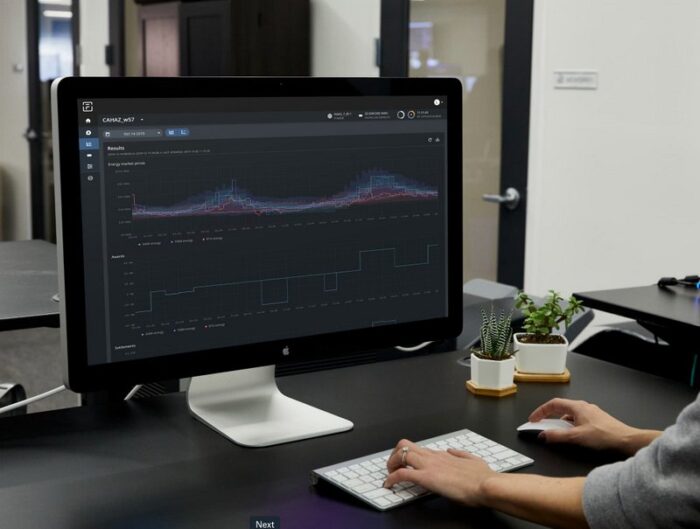Bidding Wars: Fluence software eyes emerging opportunity for under 50 MW asset class

In our Bidding War series, we will look at the BESS operators and optimizers that are playing (and winning) in the evolving energy market and grid services game.
Maximizing revenue for larger battery storage projects from energy arbitrage sales into the grid can be an overwhelming task without robust algorithm and machine learning software. Apart from myriad rate variations and other factors to consider in arbitration, optimization is complicated by the growing number of electricity markets that operate on five-minute update frequencies for windows of bid opportunity. That’s data center heaven.
One merchant storage bid optimization provider is Fluence, which has for years offered bidding software for front-of-the-meter systems for storage assets typically 50 MW or larger. Now the company can help optimize the market interaction for storage facilities as small as 5 MW with its new Fluence Mosaic Pro and Mosaic TaaS solutions, according to Chris Casale, senior manager of energy markets & optimization for Fluence.
“When I started at Fluence three-and-a-half years ago, I don’t think we’d look at anything under 50 MW for our Mosaic software. Now, we’ll look at smaller stuff and we partner with companies that focus on smaller installations,” Casale says.
Evolving market factors
Energy arbitrage is the leading revenue source for battery storage projects, and opportunities abound if an asset operator is nimble enough. The real-time market in Texas has paid up to $5,000 per MW, providing clear incentive for battery bank operators to get it right. In the California market, maximum real-time payment has ranged from $1,000 to $2,000/MW (See SB June 21, 2024).
“As the market changes, when you buy a bid optimization service, what you’re getting is not only getting the optimization of the asset, but you’re getting access to the market knowledge,” Casale says. “And as the market rules evolve and change, we [Fluence] will keep up with that and be constantly implementing those changes in the software. When you look at it from a cost/benefit analysis, there’s really a lot of benefit, especially for smaller shops.”
Fluence mosaic currently operates in CAISO and ERCOT in the US, with expansion plans for MISO already announced and others likely to follow in the future.
“In CAISO, we can bid stand-alone batteries, hybrid co-located batteries — meaning solar + storage, and situations with a point of interconnect limitation or an investment tax credit limitation,” he explains. “CAISO treats the hybrid asset not as two, but as one entity and that changes the algorithm.”
Market evolution continues. The maturing of ISO demand also helps drive the need for optimization technology. “California was on the forefront of it with four-hour battery duration [provision requirements], now we’re starting to see some early signs of six-hour duration, and we’re getting close to eight-hour duration needs,” Casale says.
As larger storage projects are adopted by more U.S. states, the opportunities for merchant energy arbitration rises. “More of the markets are now anticipating storage, they see the value, and they see the need. And they can also see the [project] queue. So, they’re beginning to, you know, show interest,” Casale says.
The national footprint for Fluence Mosaic is growing beyond CASIO and ERCOT. “We are currently evaluating which US and global markets to enter next. Right now, we’re ready to go in MISO,” Casale notes.
Sub-hour optimization

Building off Fluence Mosaic’s AI-enabled price forecasting and bid optimization software, the company has a new integrated new offering: Mosaic Pro, which layers daily trading strategy guidance from Fluence experts into Mosaic’s existing software, and Mosaic Trading-as-a-Service. The latter is a complete trading solution, including software, daily strategy guidance and implementation, and full market operations, including scheduling, 24/7 control desk, and bid submission.
Developing and optimizing such systems from scratch can take years and require resources many storage project managements lack. “They could try to build a program in house, or they could leverage our experience and take advantage of it,” Casale says. “Our software provides returns of 40% to 60% above a sort of a traditional trading strategy that you would come up with if it is based on discharging in the top four [highest demand and return] hours and charging in the bottom four hours, he says.
“Hourly markets have moved down to sub-hourly periods like 15 minutes and now five- minute markets, so the number of decisions that you have to make and the number of combinations of choices from an optimization standpoint, is exponential,” Casale reckons.
Serving green aggregators
One emerging class of customer involving multiple smaller assets is the Community Choice Aggregator, or CCA. Acting as a green source of energy for the consumer, the CCA provides the greenest solutions available to the customer, in conjunction with the utility, which traditionally operates at least some fossil fuel assets.
“We are working with two CCAs now using our Mosaic software. One is a smaller CCA with sub-50 MW providers, and the other has multiple facilities all over 50 MW,” Casale notes.
CCAs are currently authorized in ten states: California; Illinois; Maryland; Massachusetts; New Hampshire; New Jersey; New York; Ohio; Rhode Island and Virginia, according to U.S. EPA. “In 2022, about 5.7 million customers procured about 14.6 billion kWh of electricity through CCAs,” the agency reported in March of this year, citing research sources including NREL.
Fluence’s Mosaic bidding software is currently available in CAISO, ERCOT, the Australian NEM, and is expanding to other markets. “And we recently began working in Japan,” Casale notes. Globally, Fluence battery energy storage systems are in 48 markets with over 38 GWh of installed capacity, spanning over 260 installed projects.
“These are really exciting times,” Casale observes. “I think that the one big thing about battery storage is it’s such a new technology. It can act as a generation resource, but it also can act as load, charging from the grid; it’s bi-directional, which is unique. Within one storage asset you have multiple products with both [PPA] energy [contracts] and ancillary services — really two different types of assets. That duality is something that, traditionally, nobody has really had to consider.”





Comments are closed here.